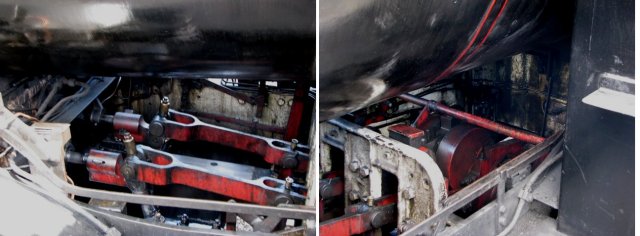We're a bit late with "today's" blog as it is Saturday evening as I write up the events for reasons you'll see later on. However, as they say, better late than never.
It was a lazy day today what with all the hectic activity of walking up and down the hills of Oxted and Woldingham to say nothing of the heavy mental work researching the Letheingsett Parish Records on the white-on-black frames of microfilm quickly whirling past my eyes and making notes of the relevant records at the same time. Haven't had a mental exercise like that in months! So I decided that today would be one of those lazy days.
A lot of the morning was spent getting my notes in order and in a format that reduced the blur of small wall-to-wall letters to something where I could identify each entry at a glance. In researching family roots on microfilm, several passes of the film strip are usually taken as, each entry raises a question about another entry that may not be complete or may have been completely missed.
For example, Stephen Moore died November 1st 1804. The notation on the parish record states "...leaving a widow and 6 children." When I updated the records for Stephen Moore on ancestry.co.uk and compared things with my notes, I found I was missing details on one of his sons, Jeremiah. So this will require a second pass of the microfilms. I potentially have his marriage record and possibly his death record but not his birth record. And it could also be the case that Jeremiah isn't a child of Stephen and Sarah Moore?
I then walked up to the NNR Sheringham station to catch the 10:30 train to Weybourne shops. Great Eastern Railway Class N7 0-6-2T #69621 was waiting on Platform #1 putting on the usual display of blowing off steam.
#69621 is an "inside-frame" locomotive that was typical of many English and European locomotives. The pistons, cylinders, crank and connecting rods are inside the frame of the locomotive. This puts a lot of stress on the crank shaft. As steam locomotives got bigger, all of this gear was moved outside the frame. This did away with the crankshaft which was the weak part of the locomotive. Almost all steam locomotives in North America were "outside-frame" locos.
The lads, Andy, Brian, and Bob, were busy working on the vacuum brakes of an old British Rail Mark 1 passenger coach getting it ready for the big steam gala for next weekend. I did a bit of touch-up painting on the steps which gave me an opportunity to get a close look at the whole vacuum-brake system. Quite different from North America where air-brakes were the rule from the early 1900s.
Later in the afternoon Nigel appeared on the scene so I gave him a hand installing some 8" plow bolts with Allen-key sockets in the head. By the time that was done, it was time to have a shower and head back to Sheringham. It was 6pm by the time I walked down Station Road to "The Lobster" where I sat down for a pint and started to update my notes, check my e-mail, check up on the news, and other on-line things.
The nice thing about English pubs is that most of them have Wi-Fi Internet access. All you have to do is ask permission and get the password to get on-line. The next time I go to that pub, my baby laptop automatically logs me on to the Internet. I ordered some sea bass with new potatoes and stir-fry veggies along with another pint and started to work on my archive notes. I got so carried away that it wasn't until 10:30 when I looked up and realized it was dark outside. I packed things up, walked up the hill to Camberley House, and hit the hay. Which is why I'm posting yesterday's blog (Friday) today (Saturday evening).
Postscript - Roll Roofing "Copernit Starpol Fibrated Bituminous Membrane"
From time-to-time I'm going to include some "technical" notes for my further follow-up. This is one of them.
One of my projects at home has been roofing passenger cars using "roll roofing" - stuff that is similar to our asphalt shingles but in a roll that is 36" wide and 30' long. It only lasts for 3-4 years and then it has to be painted or else it starts to disintegrate. Here on the North Norfolk they are using a "fibrated bituminous membrane" called "Starpol" produced by an Italian firm, Copernit. It's a heavy material that comes in rolls 1m x 10m and is about 1/4" thick with the texture of a rubberized membrane. Here's photos of the stuff that's been on the roof for over 15 years. Andy was installing the stuff on the M&GN Brake van on the Thursday after I arrived. It simply nails in place with roofing nails. Cuts easily with a utility knife or snips.
Gonna have to check this out with the guys at St Anthony's when I get back home.
Subscribe to:
Post Comments (Atom)






No comments:
Post a Comment